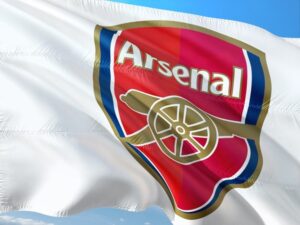Arsenal Football Club, one of the most storied names in English football, has been at the heart of some of the game’s fiercest rivalries. These clashes are more than just matches; they’re battles for pride, dominance, and in some cases, neighbourhood bragging rights. Over the decades, Arsenal has forged rivalries that span geography, ambition, and footballing philosophy, each with its own unique intensity.
Fans had a nice time following the career of their favourite club, and sometimes this path leads to placing bets. When it comes to that, the important thing is to choose the safest betting site out there. The truth is, when you place a bet, you’re trusting that sportsbook with your personal data and money. Sports expert Ian Bruce says it should be safe to place bets on the sites regulated by UK Gambling Commission (UKGC).
It’s impossible to discuss Arsenal rivalries without immediately thinking of Tottenham Hotspur. The North London Derby is a fixture drenched in history and emotion. Arsenal’s move to North London from Woolwich in 1913 lit the initial spark of this enmity, with Tottenham feeling encroached upon in their home turf. The tension escalated in 1919 when Arsenal gained promotion to the First Division at Tottenham’s expense following a vote by Football League members.
Since then, the rivalry has been defined by unforgettable matches, bitter moments, and contrasting fortunes. Tottenham fans have long resented Arsenal’s dominance, particularly during Arsène Wenger’s era when the Gunners regularly overshadowed their neighbours. Moments like Arsenal’s title win at White Hart Lane in 2004, as part of their historic Invincible season, only added salt to Tottenham’s wounds. On the other hand, Spurs’ resurgence in recent years has reignited the fire, making every meeting a must-watch for football fans worldwide.
Another major rivalry etched in Arsenal’s history is with Manchester United. While geographically distant, the rivalry is rooted in the Premier League’s formative years. During the late 1990s and early 2000s, Arsenal and Manchester United were the dominant forces in English football. The teams’ battles for league titles, FA Cups, and bragging rights created an intense and often bitter rivalry between players, managers, and fans alike.
Arsène Wenger’s tactical brilliance versus Sir Alex Ferguson’s iron will become the stuff of legend. Matches between the two were often high-stakes affairs, featuring memorable goals, controversial moments, and even on-pitch brawls. Who could forget the infamous “Battle of Old Trafford” in 2003, where tensions boiled over into a scuffle between players after a contentious penalty decision? Or the infamous “pizza-gate” incident in 2004, where food reportedly flew in the tunnel after a particularly heated encounter?
Arsenal’s rivalry with Chelsea has grown significantly in the modern era, fuelled by Chelsea’s rise under Roman Abramovich’s ownership. The influx of wealth and star power at Stamford Bridge transformed Chelsea into title contenders, and naturally, the two London clubs began to clash more fiercely. Arsenal fans often see Chelsea as a nouveau riche side attempting to buy success, while Chelsea supporters relish the opportunity to outshine one of England’s traditional footballing powerhouses.
The 2007 League Cup final, where Chelsea defeated Arsenal in a fiery encounter featuring brawls and red cards, encapsulates the heated nature of their modern-day rivalry. Arsenal’s victory over Chelsea in the 2020 FA Cup final was a moment of redemption for Gunners fans, showing they could still get the better of their neighbours when it mattered.
Liverpool is another club that has shared a long and storied rivalry with Arsenal, though this one has been defined more by mutual respect than outright animosity. Their clashes, particularly in cup competitions, have produced some of football’s most iconic moments. The 1989 First Division title decider at Anfield, where Michael Thomas scored in stoppage time to secure Arsenal the league title, remains one of the most dramatic conclusions to a season in football history.
A less celebrated but still notable rivalry exists between Arsenal and Leeds United, one that peaked during the 1960s and 1970s. Leeds, under Don Revie, became one of the toughest and most competitive teams in the country, and their encounters with Arsenal often turned into gritty, hard-fought battles. The rivalry reached its zenith in the 1972 FA Cup final, where Leeds triumphed 1-0, leaving Arsenal to rue a missed opportunity for silverware.
Other rivalries, such as those with West Ham United and Nottingham Forest, have flickered in intensity over the years, shaped by memorable matches or shared history. While not as fierce as Arsenal’s more prominent rivalries, these fixtures still carry a sense of occasion and nostalgia for fans who have witnessed iconic clashes over the decades.
What sets Arsenal’s rivalries apart is the way they reflect the club’s identity and journey through football’s ever-changing landscape. From the local, deeply personal disdain of neighbours, Tottenham, to the competitive clashes with United, Chelsea, and Liverpool, each rivalry tells a story of triumph, heartache, and nothing short of sheer passion.

